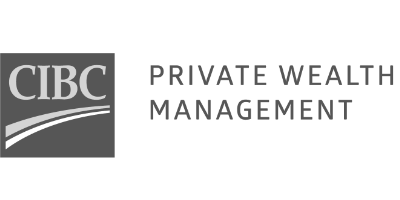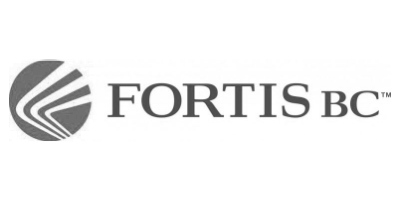“Mindfulness trains your brain to focus. And where there’s focus, there’s productivity.”
Are you an overachiever, a busy parent, a Type A or Enneagram 3 or 8 who feels the need to tackle your ‘to do’ list the second you wake up? Do you believe that multi-tasking is the key to getting more done? Or are you convinced that the quicker you move, the more productive you’ll be? If you answered ‘yes’ to any of these questions, you’re not alone and this article is for you – if you’ll slow down long enough to read it, that is!
SLOW DOWN. GET AHEAD.
There are countless apps, articles, and best selling books telling us how to get more done and be more successful. Yet, the net effect of these tools can leave us feeling more stressed out than ever before, feeling inadequate, or like we are not doing enough to live up to our potential.
But what if the most radical tool we have for productivity is slowing down? What if the first thing we were to do each day was get comfortable in a quiet space, distraction-free, and simply focus on the sounds and smells around us, the things we can see or touch, or the sound, movement and rhythm of our breath?
Sounds pretty unproductive, right? Think again.
This is Mindfulness, the oldest trick in the book for optimal health and happiness, but also productivity.
MINDFULNESS MAY NOT BE WHAT YOU THINK IT IS
Most people think having a mindfulness practice means they need to sit on a mountaintop, cross legged, palms up, with perfect posture, breathing and clarity of thought. But this is not the case.
Mindfulness is not about being perfect; it’s about being present. Or as the godfather of mindfulness Jon Kabat-Zinn defines it, mindfulness is “awareness that arises through paying attention, on purpose, in the present moment, non-judgmentally.”
And although mindful breathing, which encourages you to focus on the breath, is the most common recommendation to calm your mind and body, it’s not the only way to be mindful. You can also be present while you purposefully pay attention to what you eat (mindful eating), how you walk (mindful walking), how you stand (mindful standing), what you say (mindful talking), how you work (mindful working), or how you move or exercise (mindful movement). Okay, you get my point! Mindfulness is anywhere you want it to be. You just need to pay attention, on purpose, in the present moment, non-judgmentally.
Learn more: Reduce Stress with Mindful Breathing
Learn more: Multi-tasking is stressing out your body and brain
BEING MINDFUL CAN IMPROVE YOUR HEALTH
When you’re multi-tasking, rushing, or stressed out, you can activate The Stress Response (aka Fight or Flight response), which negatively impacts your nervous system and hormones and therefore every system in your body.
But one of the byproducts of mindfulness, of paying more attention to the things around you, is that you inevitably slow down. When your body and mind are relaxed and calm, you can experience any or all of the following:
- hormone balance
- improved executive functioning
- increased learning and memory, clarity and control of emotions
- reduced susceptibility to stress-related disorders
- reduced “monkey mind”
- optimized digestion, immunity, reproduction
- improved metabolism
- improved ability to detoxify
- lowered blood pressure
- reduced pain sensitivity
- improved ability to listen to your body
TRAIN YOUR BRAIN FOR KINDNESS AND RESULTS
As I’ve refined my own interpretation of Mindfulness, I’ve come to realize 3 things:
- the importance of the word ‘non-judgmentally’. Mindfulness is also about learning to not judge yourself – or others, a habit we could all benefit from refining.
- that mindfulness is a workout. For today’s productivity-obsessed professionals who are innately averse to slowing down, I position mindfulness as a way to train the brain. But instead of strengthening your legs or arms or core, you’re training your brain to focus. And where there’s focus, there’s productivity.
- incorporating mindfulness into the morning can be a game changer.
Learn More: Reduce Stress with Mindful Breathing
HOW TO DO MINDFUL MORNINGS
Mindful mornings is one way to train your brain to do one thing at a time. The best way to transition to a Mindful morning is to start by allowing yourself 5 minutes to take some deep focused breaths from your bedside or separate room, and slowly wake up. As you breathe, pay attention to how your body is feeling and what you may be needing. Take a moment to acknowledge what you are thankful for and to affirm yourself. When you are ready for it, progress to your next wake up routine, whether that be breakfast or exercise. Again, keep all of your attention on the next single action in front of you.
As part of introducing mindfulness to your morning, avoid technology as much as possible for the first 30-60 minutes of the day. If that seems impossible at first, start with 10-20 minutes. Specifically avoid things that can easily take your attention away such as email, social media, news alerts, and other messenger apps. Technology platforms (prompts, badges, alerts) are designed to stimulate a response from you and leave you feeling reactive. This sends your nervous system into overdrive. But if we decide to intentionally check our messages after our mindful morning time is over, we can feel more ready and in control of how we deal with the task of answering messages, and whatever else the day holds.
LISTEN TO YOUR BODY.
As part of this experiment, make observations about how you are feeling during the rest of your day:
- Are you feeling less tense?
- Has the feeling of being scatterbrained dissipated?
- Are you feeling more productive and in control?
- Are conversations or interactions that were once challenging now more enjoyable?
- Have you experienced enhanced creativity?
- Do you feel less stressed about your day ahead?
Give mindful mornings a try for a week, even if it’s just 10 mins. See if you notice any positive changes in yourself. If you feel like you need additional health and wellness support, get started with The 8 Weeks to Awesome Wellness Challenge.
“I’m still astonished at how effective your program was for me.”
Just finished The 8 Weeks to Awesome. Inadvertently lost 20 pounds which wasn’t even the objective. It was to help my migraines and eczema, which it did. Way less frequency of flare ups. Headachy at the beginning but no migraines since! I’m back to my university weight! Kudos to your program. It’s well put together to keep you consistent through it.
Mark M.








